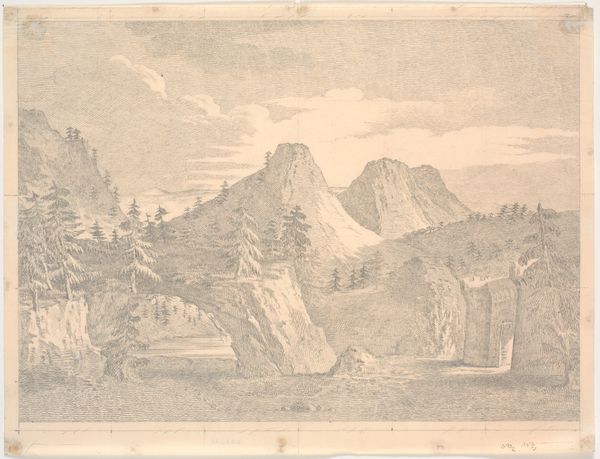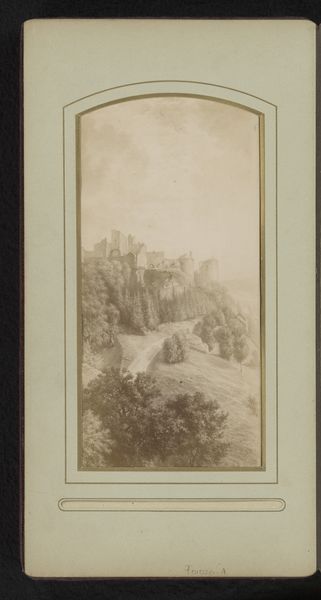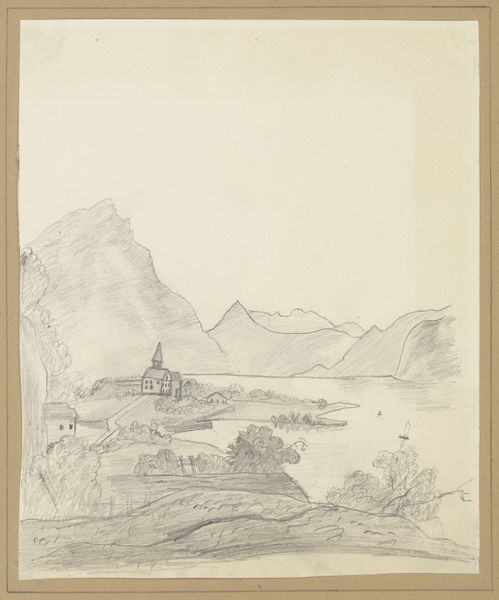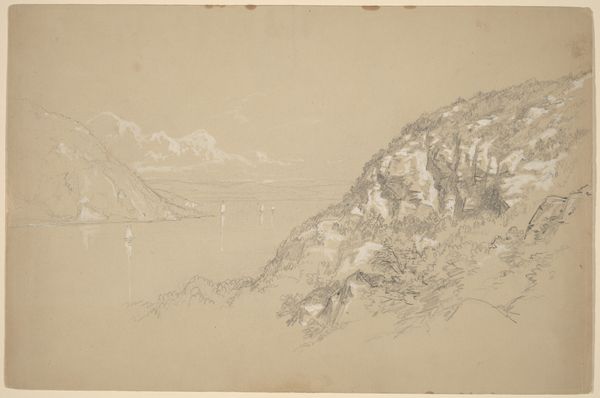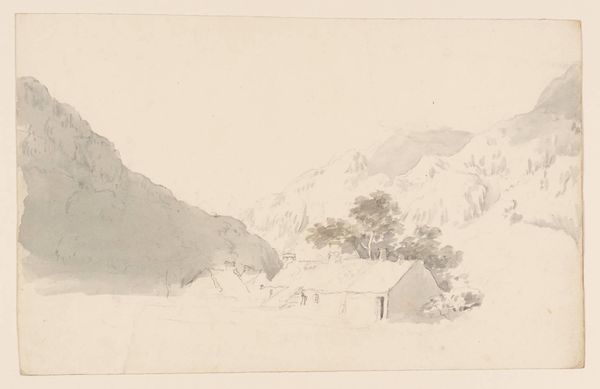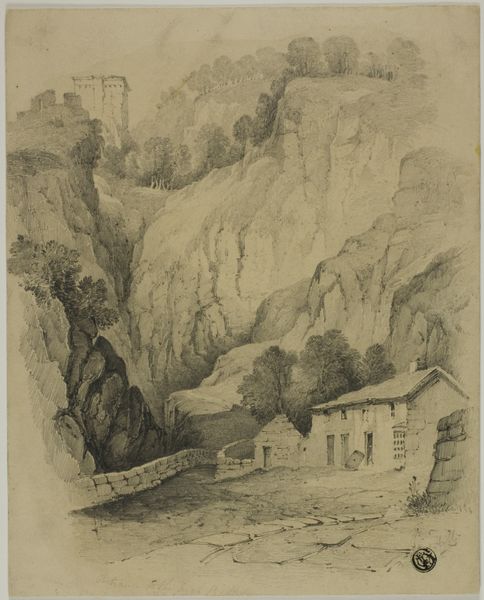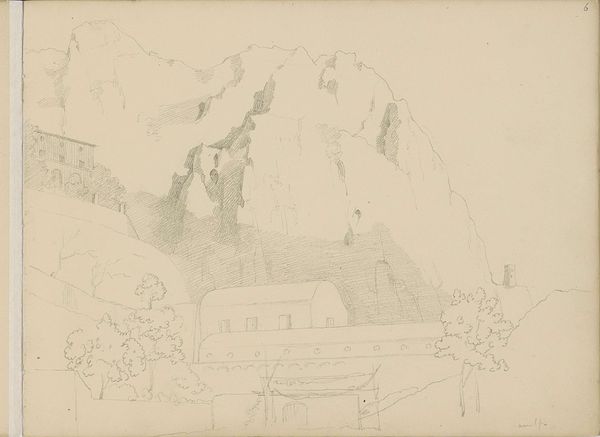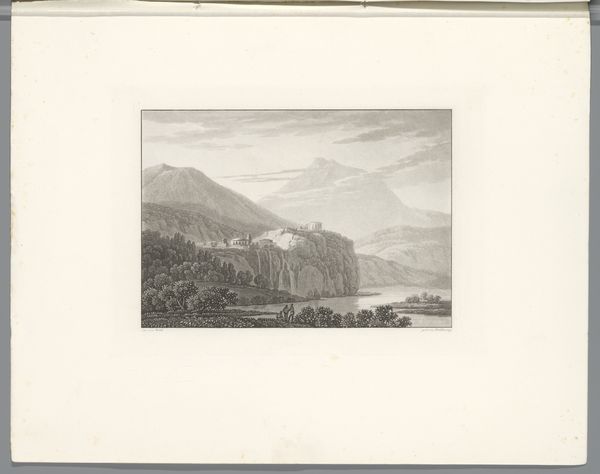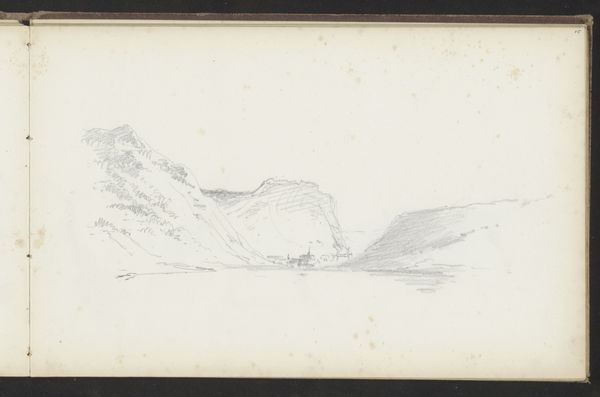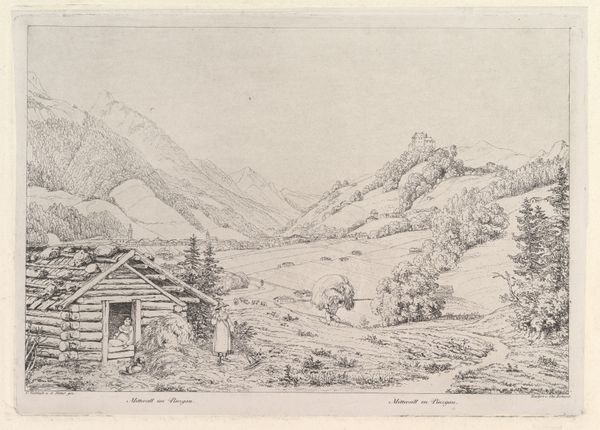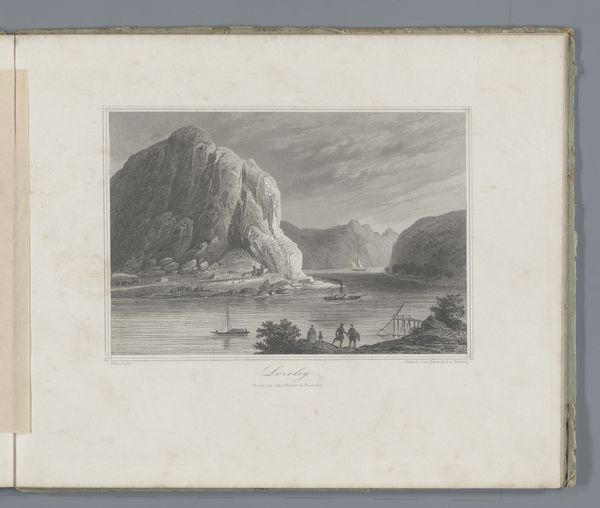
Fotoreproductie van een prent van de ruïne van een kasteel op een berg before 1889
0:00
0:00
Dimensions: height 188 mm, width 92 mm
Copyright: Rijks Museum: Open Domain
Curator: This is a photographic reproduction of an earlier artwork titled, "Fotoreproductie van een prent van de ruïne van een kasteel op een berg"—or, "Photographic Reproduction of a Print of the Ruins of a Castle on a Mountain," made sometime before 1889. The techniques include drawing with pencil, colored pencil, and watercolor. What’s your initial take? Editor: Stark and Romantic, really. The castle ruin dominating the composition has an almost oppressive quality, perched above those modest buildings nestled at the foot of the mountain. Curator: Right. That visual language resonates strongly. Mountains themselves have often been seen as symbols of spiritual ascent, and a castle… a potent image of power. Now crumbling. Editor: Indeed. The ruin underscores a theme of lost glory, which connects with the tradition of Romanticism that the artwork draws from. There's a social critique subtly woven in too, isn't there? About the impermanence of power, even of the grandest structures. Curator: Absolutely, and it uses symbols we recognize through their visual continuity. Think of other depictions of castles from the same era – they often acted as symbols of a specific sociopolitical order, reinforcing ideas about heritage and nationhood. Seeing one depicted in disrepair subtly undermines those associations. Editor: It’s interesting to me that the scene includes a small dwelling that appears rather new next to the towering ruin. Curator: Notice the subtle earthy tones, which help to highlight the contrast between decay and what feels like the possibility of renewal. A new building has new symbolic meaning. The aged quality of the paper further adds a layer, invoking memory and the passage of time. Editor: I agree; and consider how photographic reproduction allowed the wider dissemination of such imagery and the social ideas that go with them. So what we have here is not just a landscape image, but a visual statement circulated broadly at a specific time. Curator: Precisely! It reminds us that the landscapes are laden with cultural and social meaning and the artist is consciously using these symbolic associations to make their point. Well, looking at the relationship of nature and culture I’m satisfied with our little exploration. Editor: Me too, the conversation highlighted new questions, always a worthy moment.
Comments
No comments
Be the first to comment and join the conversation on the ultimate creative platform.
